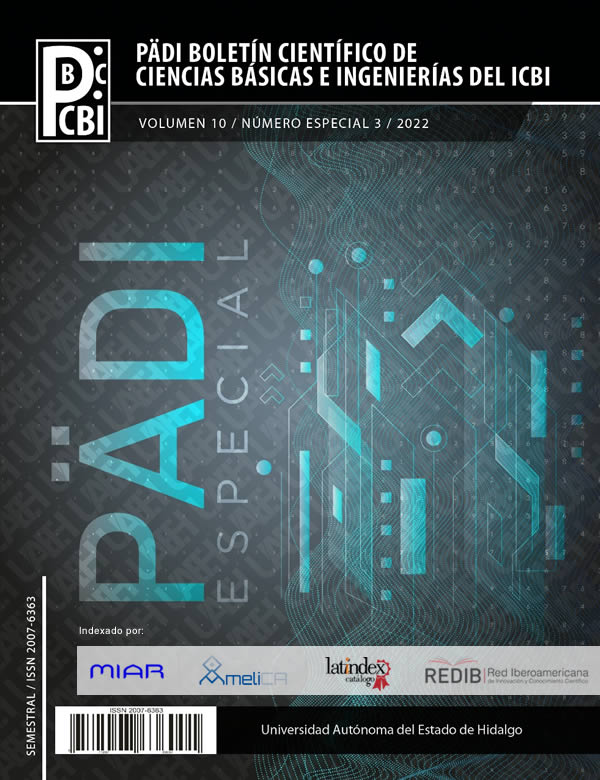Rotation-invariant image classification using a novel 1D CNN and Multichannel Accurate Bessel-Fourier moments
Abstract
This work presents a proposal to use Bessel-Fourier moments as inputs to 1D convolutional neural networks in such a way that they take advantage of the inherent characteristics of moment type descriptors such as rotational invariance and minimal information redundancy. The results presented show that the proposal has a better performance than the deep neural network with rotation invariance.
Downloads
References
Cheng, G., Zhou, P., and Han, J. (2016). Learning rotation-invariant convolutional neural networks for object detection in vhr optical remote sensing images. IEEE Transactions on Geoscience and Remote Sensing, 54(12):7405–7415.
De Lapparent, V., Baillard, A., and Bertin, E. (2011). The efigi catalogue of 4458 nearby galaxies with morphology-ii. statistical properties along the hubble sequence. Astronomy & Astrophysics, 532:A75.
Follmann, P. and Bottger, T. (2018). A rotationally-invariant convolution module by feature map back-rotation. In 2018 IEEE Winter Conference on Applications of Computer Vision (WACV), pages 784–792.
Huang, G., Liu, Z., Van Der Maaten, L., and Weinberger, K. Q. (2017). Densely connected convolutional networks. In Proceedings of the IEEE conference on computer vision and pattern recognition, pages 4700–4708.
Larochelle, H., Erhan, D., Courville, A., Bergstra, J., and Bengio, Y. (2007). An empirical evaluation of deep architectures on problems with many factors of variation. In Proceedings of the 24th International Conference on Machine Learning, ICML ?07, page 473?480, New York, NY, USA. Association for Computing Machinery.
LeCun, Y., Cortes, C., and Burges, C. J. (2010). Mnist handwritten digit database. 2010.
Martinazzo, A., Espadoto, M., and Hirata, N. S. (2020). Deep learning for astronomical object classification: A case study. In VISIGRAPP (5: VISAPP), pages 87–95.
Rodriguez, R., Dokladalova, E., and Dokladal, P. (2019). Rotation invariant cnn using scattering transform for image classification. In 2019 IEEE International Conference on Image Processing (ICIP), pages 654–658.
Rodriguez Salas, R., Dokladal, P., and Dokladalova, E. (2021). Rotation invariant networks for image classification for hpc and embedded systems. Electronics, 10(2):139.
Simonyan, K. and Zisserman, A. (2014). Very deep convolutional networks for large-scale image recognition. arXiv preprint arXiv:1409.1556.
Singh, C. and Singh, J. (2018). Multi-channel versus quaternion orthogonal rotation invariant moments for color image representation. Digital Signal Processing, 78:376–392.
Szegedy, C., Vanhoucke, V., Ioffe, S., Shlens, J., and Wojna, Z. (2016). Rethinking the inception architecture for computer vision. In Proceedings of the IEEE conference on computer vision and pattern recognition, pages 2818– 2826.
Teague, M. R. (1980). Image analysis via the general theory of moments∗. J. Opt. Soc. Am., 70:920–930.
Wang, Z., Yan, W., and Oates, T. (2017). Time series classification from scratch with deep neural networks: A strong baseline. In 2017 International joint conference on neural networks (IJCNN), pages 1578–1585. IEEE.
Xiao, B., Ma, J.-F., and Wang, X. (2010). Image analysis by bessel–fourier moments. Pattern Recognition, 43(8):2620–2629.
Xie, S., Girshick, R., Dollar, P., Tu, Z., and He, K. (2017). Aggregated residual transformations for deep neural networks. In Proceedings of the IEEE conference on computer vision and pattern recognition, pages 1492–1500.
Zhou, Y., Ye, Q., Qiu, Q., and Jiao, J. (2017). Oriented response networks. In The IEEE Conference on Computer Vision and Pattern Recognition (CVPR).












